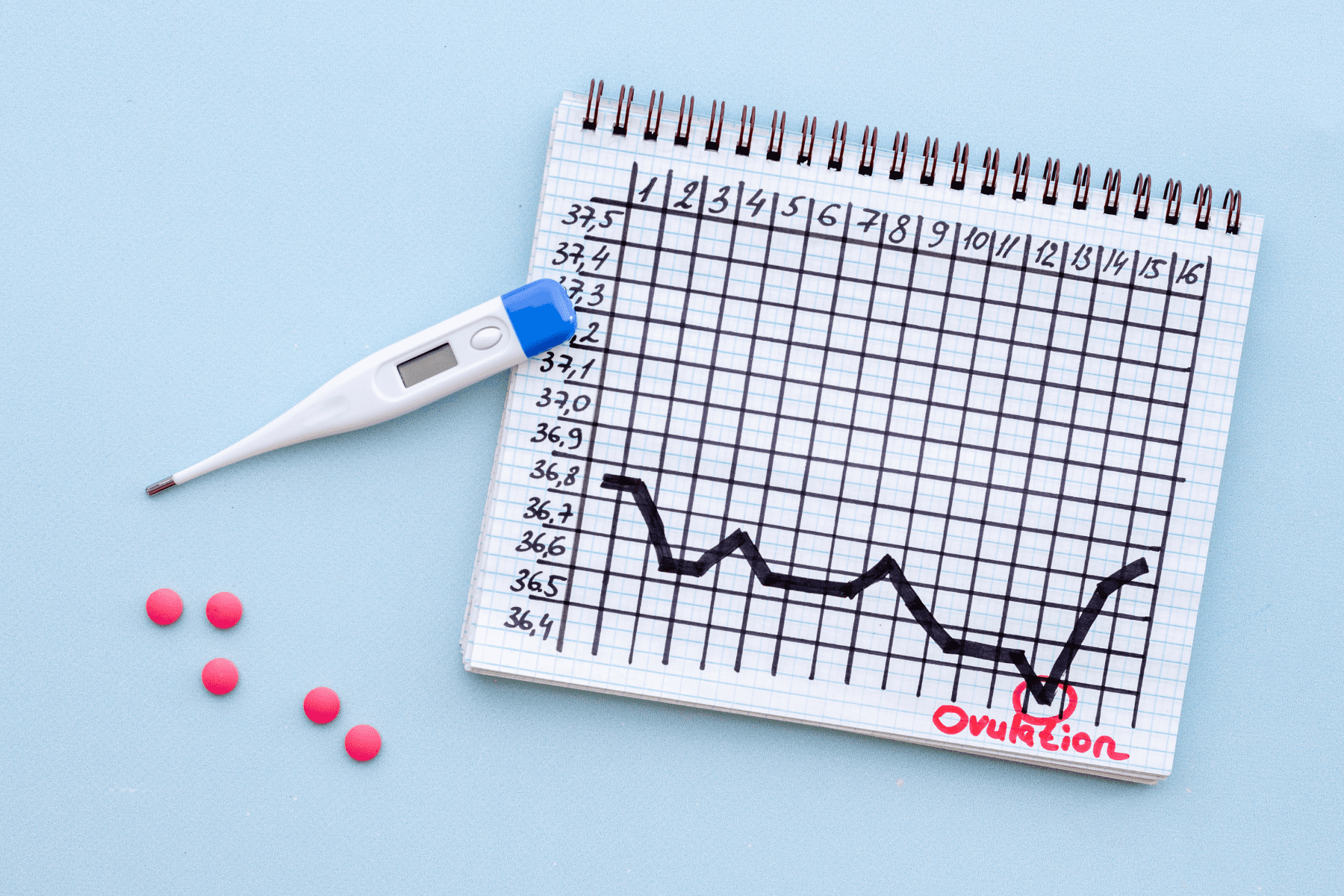Environmental Exposures & Fertility
Fertility Centers of Illinois physicians and staff continue to keep you up-to-date on advances in reproductive medicine and the availability of the newest technologies for your patients. This letter addresses the latest information on environmental exposures and fertility.
Patients are increasingly inquiring about ways to improve and optimize fertility. The question of the role of one’s environment is an increasing concern among many patients. Chemical and environmental toxins are ubiquitous in the environment. It is estimated women are exposed to at least 43 chemicals during pregnancy. During pregnancy, chemicals can cross the placental border and lead to prenatal exposure and subsequent disease. Prior to pregnancy, there are a group of chemicals: heavy metals, such as mercury, lead, and cadmium, pesticides, endocrine-disrupting chemicals (EDCs), that can lead to issues of infertility. Air pollution also remains a concern. We will review the implications of exposures to these agents and potential mechanisms to minimize risk.
Heavy Metals
Mercury leaches into the water as an industrial by-product. It can also be found in face lotions created outside the US and mercury thermometers. Mercury is a neurotoxin and has been linked to low IQ and poor language and motor development. There are fish that are known to have high mercury levels including king mackerel, shark, swordfish, marlin, orange roughy, and bigeye tuna, which should be avoided in pregnant and breastfeeding women and limited in women attempting to conceive. It is recommended to have 1-2 serving of fish lower in mercury weekly; such as salmon and shrimp. It is recommended to screen exposure risk for mercury and counsel regarding avoidance of high-mercury fish.
Lead is found in old homes and those renovating an old home. It can also be found in traditional remedies, jewelry, imported pottery, and pica. Elevated serum lead is a neurotoxin and linked to pregnancy-induced hypertension and miscarriage. Patients should be screened for lead exposure and then counseled accordingly.
Cadmium is found in rechargeable batteries, plastic production, organ meats, paint pigment, tobacco smoke and pesticides on produce. Elevated levels can lead to placental epigenetic modifications, emotional issues in boys, low birth weight, and smaller head circumference in children. Post pubertal men, cadmium is linked to decreased sperm quality, motility, and testosterone levels. In women, cadmium can mimic/inhibit endogenous estrogen levels leading to irregular cycles. It is recommended to screen patients for exposure and counsel to avoid tobacco exposure, organ meats and choosing organic grains and root vegetables when possible.
The Study of Metals in Assisted Reproductive Technologies (SMART), a prospective cohort study of infertile couples assessed whether preconception exposure to lead, mercury, and cadmium affects in vitro fertilization (IVF) outcomes. The researchers found that increased cadmium levels were associated with decreased oocyte fertilization and decreased implantation rates. This research highlights the need to inform patients of environmental exposures and arguably to convince the government to increase the regulation of toxic substances.
Pesticides
Pesticides are ubiquitous in our environment with an estimated 90% of the population having detectable levels in serum and urine samples. Pesticides can persist in the environment slowly degrading and contaminating our food, water, air, dust, and soil. Preconception and pregnancy pesticide exposure has been linked to intrauterine growth reduction, decreased IQ, pregnancy loss and low birth weight. Pregnancy and preconception pesticide exposure has also been linked to higher levels of leukemia, testicular cancer in children. It is important to counsel patients to avoid pesticides and insecticides in the home and on pets. Those that work in agriculture need to wash hands after work, appropriate protective gear and remove shoes prior to coming into the home. It is important to try and consume organics produce in particular for the following items: grapes, plums, peaches, string beans, potatoes, kale, strawberries, apples, pears, spinach, celery, and peppers (www.ewg.org/foodnews/dirty-dozen.php)
Endocrine Disruptors
Endocrine-disrupting chemicals can mimic or block endogenous hormone production and lead to adverse reproductive outcomes. The three main ones are bisphenol A (BPA), phthalates, and
Polybrominated diethyl ethers (PBDEs). BPA is found in plastics, metal can liners, cash register receipts, computers, cell phones, and reusable food containers. BPA exposure can occur from inhalation, ingestion and skin absorption. BPA is linked to aberrations in oocyte quality, embryo development, euploidy rate, and placentation. Concerns around BPA have led to “BPA-free” plastics, which often use bisphenol S an equally harmful compound. It is advised to educate patient about limiting their use of plastic containers, especially reheating in microwaves and advise switching from plastic containers to glass and stainless steel, avoid taking cash registers receipts printed on thermal paper, avoid canned foods and bottled water with the number 3 or 7 stamped on the bottom.
Phthalates are synthetic compounds found in toys, food processing, IV tubing, body lotions, and floor processors. They have been linked to an early gestational age of delivery. A study exploring environmental exposures on IVF outcomes suggested that phthalates lower the number of oocytes retrieved, pregnancy rates and increased risk of loss of fewer than 20 weeks. Paternal exposure has been linked to higher levels of sperm DNA damage. Couples should be advised to replace plastic with glass or steel for cooking and drinking, minimize heating foods in plastic and minimize fast/processed foods.
PBDEs are flame retardants used on upholstered furniture, textiles, carpeting, and electronics, in the US mostly now replaced with replacement flame retardant alternatives. Due to their lipophilic nature, they have a half-life of up to 12 years. In California where flame retardants are more often used, exposure in pregnancy has been linked to maternal thyroid abnormalities. Other studies have suggested an increased incidence of pregnancy loss of 28% in patients with higher levels of PBDEs in the preconception period. Similarly, higher levels in children during neurodevelopment period have been linked to lower IQ/decreased attention in children. It is important to inquire about occupational exposure to these chemicals, advice those trying to conceive to avoid exposure and purchase furniture not using PBDEs, minimize children exposure to newly upholstered furniture with PBDEs, and lastly advise taking off shoes and washing hands for those that may have exposure outside of the home.
Air Pollution
Epidemiologic studies have suggested a relationship between air pollution and adverse pregnancy outcomes: early pregnancy loss, stillbirth, preterm delivery, and low birth weight. A longitudinal study of environmental exposures and fertility also demonstrated a relationship of air pollution to pregnancy loss. In addition to obstetrical outcomes, there has been a relationship between poor air quality to lower IQ in children. A study exploring the impact of living near a highway showed higher rates of infertility. Although difficult to control the environment, it is advised to avoid outdoors during the time of poor air quality and to use a HEPA filter in the home.
Downloadable Information for patients can be found at the Program on Reproductive Health and the Environment and the Centers for Disease Control and Prevention.
The physicians of Fertility Centers of Illinois are happy to answer any questions regarding this topic and others in our series from you, your staff or your patients.
References
- Bloom MS, Parsons PJ, Steuerwald AJ, Schisterman EF, Browne RW, Kim K, et al. Toxic trace metals and human oocytes during in vitro fertilization (IVF). Exposure to environmental agents. ACOG Committee Opinion No 575. Obstet Gynecol 201 Reprod Toxicol 2010; 29:298–305.
- Bloom MS, Fujimoto VY, Steuerwald AJ, Cheng G, Browne RW, Parsons PJ. Background exposure to toxic metals in women adversely influences pregnancy during in vitro fertilization (IVF). Reprod Toxicol 2012; 34:471–81.
- Thalia R. Segal, M.D. and Linda C. Giudice, M.D., Ph.D. Before the beginning: environmental exposures and reproductive and obstetrical outcomes Fertil Steril_ 2019;112:613–21
- Rochester JR, Bolden AL. Bisphenol S and F: a systematic review and comparison of the hormonal activity of bisphenol-a substitutes. Environ Health Perspect 2015; 123:643–50.
- Strakovsky RS, Schantz SL. Impacts of bisphenol A (BPA) and phthalate exposures on epigenetic outcomes in the human placenta. Environ Epigenet 2018; 4:dvy022.
- Yang S, Tan Y, Mei H, Wang F, Li N, Zhao J, et al. Ambient air pollution the risk of stillbirth: a prospective birth cohort study in Wuhan, China. Int J Hyg Environ Health 2018; 221:502–9.
- Carré J, Gatimel N, Moreau J, Parinaud J, Léandri R. Does air pollution play a role in infertility? A systematic review. Environ Health 2017; 16:82.
Medical contribution by Jennifer Hirshfeld-Cytron, M.D.
Dr. Hirshfeld-Cytron is board certified in both Obstetrics and Gynecology and Reproductive Endocrinology and Infertility and has been practicing medicine since 2004. She completed her Obstetrics and Gynecology residency at the University of Chicago, and then completed her three-year fellowship in Reproductive Endocrinology and Infertility at Northwestern.
Endometrial Receptivity Analysis (ERA®)
We continue our efforts to keep you updated on advances in reproductive medicine and the availability of the newest technologies at Fertility Centers of Illinois. This letter provides information regarding Endometrial Receptivity Analysis (ERA®).
More research is indicating that IVF implantation failure can be caused not only by problems with the quality of the embryo (most often genetic errors) but because of problems with the endometrial lining – the tissue on the inside of the uterus that prepares each month for the arrival and implantation of an embryo. This can lead to an unsuccessful in vitro fertilization (IVF) due to implantation failure, even with a genetically healthy embryo.
In our fertility practice during the past six years, we have been using a cutting-edge test called the Endometrial Receptivity Analysis (ERA®) to improve the chances of a successful frozen embryo transfer in patients who have experienced unsuccessful IVF due to 1 or 2 frozen implantation failures. This ERA test helps reproductive endocrinologists determine the right time to transfer an embryo, and we have experienced superb results.
What Is ERA®?
The Endometrial Receptivity Analysis is an advanced, personalized, genetic diagnostic method developed by IGENOMIX that evaluates a woman’s endometrial receptivity (the status in which the endometrium is ready for embryo implantation) from a molecular point of view. In the endometrium, numerous proteins are produced under the influence of estrogen and progesterone. These proteins are involved in preparing the endometrium in terms of its thickness and receptivity for implantation. Protein production in all cells is regulated by “gene expression” (gene activation or inactivation). The ERA test analyzes the genetic expression levels of 238 genes related to the status of endometrial receptivity, assessing the activity of genes in the endometrial lining in order to pinpoint a woman’s optimum time for transfer of a frozen embryo. For 75-80% of women, 5 full days of progesterone, then thaw and transfer the embryo the next day, is the optimal ‘window for implantation’. The biopsy test assesses the status of the endometrium and determines whether the patient’s uterus has a receptive gene profile after the 5 days of progesterone.
How Is the ERA Test Cycle Done?
A ‘mock’ programmed cycle is most often done with approximately 2+ weeks of natural estrogen then adding 5 full days of natural progesterone (vaginal and/or Progesterone in oil (PIO) or both). For the ERA test, an endometrial biopsy must be performed at LH+7 (LH surge + 7 days) during a woman’s natural cycle or at P+5 (start of progesterone + 5 days) in a woman’s hormone replacement programmed cycle.
The biopsy consists of a 10-second scratching of the uterine lining to obtain tissue. It is usually painful for 10-30 seconds. Taking Aleve or Advil 1 hour before helps reduce the cramping. For those that want to use Valium to relax, a driver is necessary. The biopsy is sent to the Igenomix lab for analysis of the expression of 238 genes involved in the endometrial receptivity. (www.Igenomix.com).
Who Should Consider the ERA Test?
The analysis results determine whether the patient’s endometrium is classified as receptive or non-receptive by a computational predictor. If the patient is classified as non-receptive, it means the ‘window of implantation’ is displaced and not the typical 5 days of progesterone. Once this personalized window of implantation is identified, (4.5, 5.5, 6 or 7 days of progesterone, instead of 5 days) the embryo may successfully implant in a subsequent cycle called the Personalized Embryo Transfer.
The ERA test has now been shown to be helpful in several studies, involving thousands of patients who have experienced two to three implantation failures, despite good quality frozen embryos. A displaced “non-receptive” window of implantation has been detected in 20 to 25 percent of these patients.
ERA testing is most often recommended for patients who have had 1 or 2 frozen IVF implantation failures, despite a normal uterus and endometrial thickness (6 mm or more), and apparently healthy-looking embryos. It allows the ‘personalized window of implantation’ to be detected.
I will even offer ERA testing options to couples who only have a few frozen embryos, even if they have not failed a frozen transfer yet. In addition, for my couples who have done Pre-Implantation Genetic Testing (PGT) on their embryos, I will often offer the ERA test before doing a frozen transfer, since the testing of their embryos was so costly. It is a shame to fail with a genetically normal embryo because the timing of the progesterone and the transfer is off by 12-24 hours.
If you would like more information about the ERA test go to www.Igenomix.com.
Comparison of Menopur Liquid and Powder in Women Undergoing ART (CLARA)
Fertility Centers of Illinois is pleased to announce a new clinical research study for qualified study participants pursuing IVF/ICSI. Our clinical research team is dedicated to further pursuing advancements in fertility technology in order to provide our patients with the most recent options by participating in clinical trials and research studies. Throughout the years, we have conducted ground-breaking research that has contributed to improvements in assisted reproductive technologies (ART) and fertility treatment. As a result, our team of revered experts regularly contributes to many leading peer-reviewed fertility journals.
Fertility Centers of Illinois has been offered an exciting opportunity to conduct a new research study sponsored by Ferring Pharmaceuticals. The name of the study is the Comparison of Menopur Liquid and Powder in Women Undergoing ART (CLARA). This study will be conducted at the Fertility Centers of Illinois – Chicago River North IVF Center only.
This is a randomized, double-blind, double-dummy, parallel-group, multicenter non-inferiority trial. Study subjects will be randomly assigned 1:1 to receive either Menopur liquid or Menopur powder. The assigned medication will be completely unknown until after the nationwide study trial has ended.
Participants will receive one complete IVF/ICSI cycle, including all injectable and vaginal medications used for the IVF/ICSI cycle.
Enrollment dates will be December 2019 – ??
We are specifically looking for women who fit the following criteria:
- Pre-menopausal women 18-42 years of age at screening
- BMI 5-38 kg/m2 (inclusive)
- Regular menstrual cycles of 24-35 days, presumed to be ovulatory.
- Documented history of infertility for at least 12 months (for women 35 and under) or 6 months (for women 36 and older) before randomization (not applicable in case of bilateral tubal occlusion or male factor infertility requiring the use of donor sperm.)
- HSG, HSC, or HUS documenting normal uterus at screening or within 1 year prior to screening.
- Presence of both ovaries without evidence of clinically significant abnormality and normal adnexa.
- FSH between 1-12 IU/L within 3 months prior to randomization (cycle day 2-4)
- AMH greater than 1.0 ng/mL at screening
- Willing to accept eSET
- Negative results of ID labs within 6 months prior to study enrollment.
- Male partner with semen analysis that is at least adequate for ICSI within 6 months prior to screening.
- Total testosterone, prolactin, and thyroid-stimulating hormone within normal limits within 12 months prior to screening.
If you have any recommendations for good candidates for this study, please encourage them to apply by sending an email to FCIResearch@fcionline.com and to reference the Menopur pen study. Our research department will reply and review their applications for eligibility.
Medical contribution by Meike Uhler, M.D.
Dr. Uhler feels fortunate to play a role in this stage of her patients’ lives. Her research interests focus on the evaluation and treatment of infertility, as well as raising fertility awareness in the general population.








